#shinmen takezō
Text
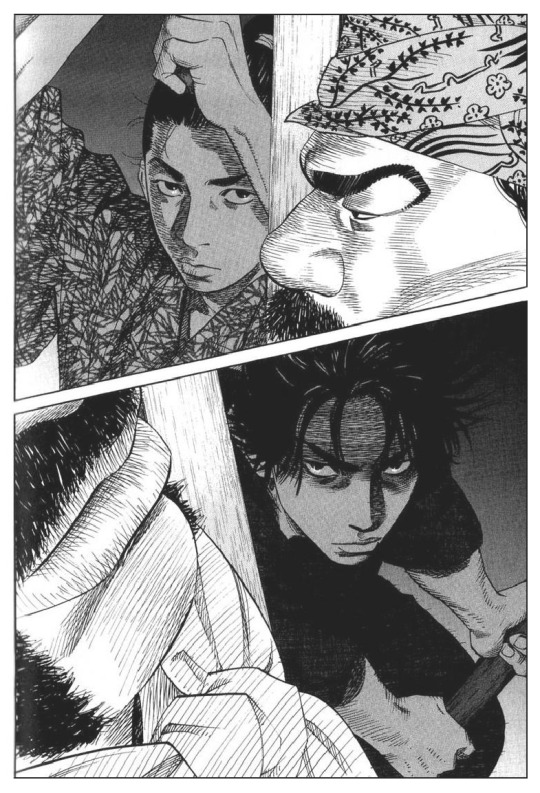
#takehiko inoue#井上 雄彦#vagabond#バガボンド#tsujikaze tenma#辻風典馬#hon'iden matahachi#本位田又八#shinmen takezō#新免 武蔵#miyamoto musashi#宮本武蔵
111 notes
·
View notes
Text


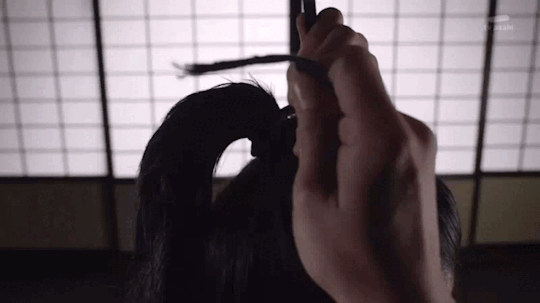

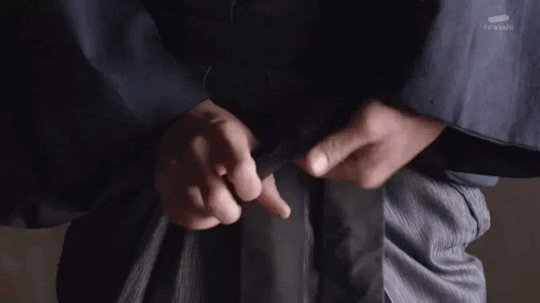

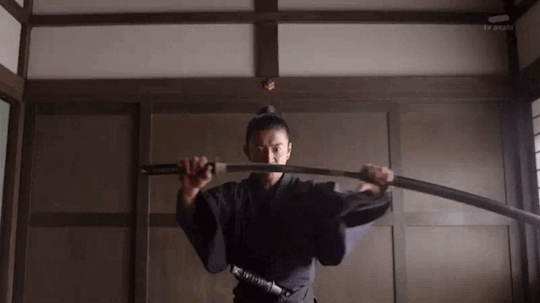

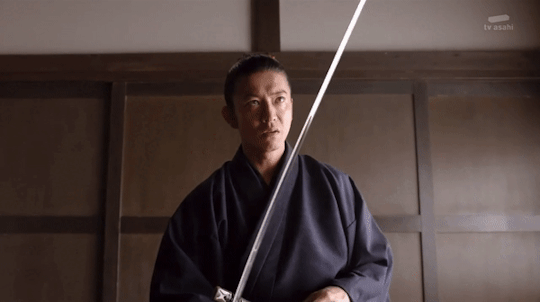
Miyamoto Musashi: Episode 1 (part 4)
Kimura Takuya as Shinmen Takezō / Miyamoto Musashi
31 notes
·
View notes
Text
«────── « HEADCANON » ──────»
At some point later in the plotline, he sends V the following quote from Miyamoto Musashi:
Even should you abandon your body, never abandon your honor. Never stray from the Way.
This quote comes from the book Musashi's Dokkōdō (also known as "The Path of Aloneness", "The Way to Go Forth Alone", or "The Way of Walking Alone"). A bit more about the book, author, and potential interpretations below the cut.
Miyamoto Musashi went by several names (Shinmen Takezō, Miyamoto Bennosuke, or Niten Dōraku; the latter being his Buddhist name), though is most known for having been an expert swordsman, rōnin, and philosopher. Not much is known about his life outside his travels and duels, but his teachings and philosophy are actually fascinating. He created the kenjutsu technique of niten'ichi (also known as nitōichi), or using a large sword alongside a "companion sword". Many attribute his development of the practice to the two-handed movements of Buddhist temple drummers, given he was raised as such by his father and uncle.
Additionally, he's known for developing quite the artistic approach to things later on in his life. He's created several ink paintings and caligraphy pieces, shown below and found on Medium.

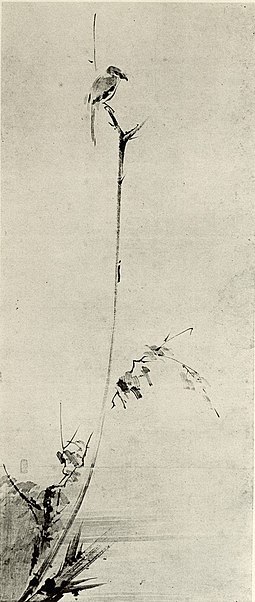
Returning the focus back to Dokkōdō, the book itself is actually a series of 21 principles written during the preparations Miyamoto Musashi took prior to his death. The book, too, was allegedly dedicated to his favorite disciple, Terao Magonojō.
This in of itself is actually quite symbolic within its presentation within Cyberpunk, as V's relationship with Takemura is very rooted in the pair constantly learning from one another and their experiences together. Over time, should V work with Takemura and show favorability toward the Arasaka route, Takemura actually grows to appreciate V and enjoy their companionship.
But aside from that, the principles from Dokkōdō itself is just as meaningful:
Accept everything just the way it is.
Do not seek pleasure for its own sake.
Do not, under any circumstances, depend on a partial feeling.
Think lightly of yourself and deeply of the world.
Be detached from desire your whole life long.
Do not regret what you have done.
Never be jealous.
Never let yourself be saddened by a separation.
Resentment and complaint are appropriate neither for oneself nor others.
Do not let yourself be guided by the feeling of lust or love.
In all things have no preferences.
Be indifferent to where you live.
Do not pursue the taste of good food.
Do not hold on to possessions you no longer need.
Do not act following customary beliefs.
Do not collect weapons or practice with weapons beyond what is useful.
Do not fear death.
Do not seek to possess either goods or fiefs for your old age.
Respect Buddha and the gods without counting on their help.
You may abandon your own body, but you must preserve your honour.
Never stray from the way.
This version was translated, yet an archived version of the original handwriting can be found here for those who are interested.
Just examining Takemura's character, we can see how he aligns himself with this ascetic mentality.
In his upbringing, Takemura never had much and was really taught to be appreciative of what his family did have. Then, being brought into Arasaka, he was taught to show that same sentiment. Arasaka could provide wonders for him, sure, but it was not because they could. It was because he, and other soldiers under their ranks, deserved it. Earned it. Everything he possessed was a result of his work and his loyalty.
Not to mention, Takemura does show admiration for the honor that ancient samurai (and by extension, rōnin such as Miyamoto Musashi) abided by. Such is evidenced in the endings where V does not side with Hanako. His last voicemail to V discusses the jisei, or death poems most prominently written within East Asian cultures, and furthermore how he believed himself to not be "of [the samurai's] number" (hence why he simply closed his voicemail with a wish for V to burn in hell).
Note: Further researching the way Japanese culture creates these death poems, it's found that they have their origins in Zen Buddhism, so it also ties into the greater thematic elements present in Miyamoto Musashi's works.
All in all, I think this is a really neat reference, and it serves its purpose of highlighting the type of relationship that V and Takemura have, as well as illustrating Takemura's frame of mind throughout the main plot events.
5 notes
·
View notes
Text
Miyamoto Musashi (宮本 武蔵, c. 1584 – 13 June 1645), also known as Shinmen Takezō, Miyamoto Bennosuke or, by his Buddhist name, Niten Dōraku, was a Japanese swordsman, philosopher, strategist, writer and rōnin, who became renowned through stories of his unique double-bladed swordsmanship and undefeated record in his 61 duels. Musashi, as he was often simply known, is considered a Kensei, a sword-saint of Japan. He was the founder of the Niten Ichi-ryū, or Nito Ichi-ryū, style of swordsmanship, and in his final years authored The Book of Five Rings (五輪の書, Go Rin No Sho) and Dokkōdō (獨行道, The Path of Aloneness).
Musashi said “Do nothing which is of no use!” This simple but powerful statement plays an important part of my everyday life!
0 notes
Text
Influences on Zelda: Miyamoto Musashi
Ronin are a big part of Japanese culture post feudal Japan, and being a Ronin creates an easy entry point into the Hero' Journey story archetype. And for the west, Ronin creates a unique perspective that *kind of* mirrors European Knights or American Gunslingers, but in a completely different way.
Unlike Knights, who are royalty who have no choice but work as officers. And unlike Guns for Hire (Mercenaries), Ronin can be either Samurai, who are more similar to the European knight (who lost power when their lords fell, and might rise to Lord themselves) or they might be the Foot soldier. Trained from a very young age, and know much about the ways of warfare.
They might have sworn fealty, and been devoted to the cause. But after your Lord drops you entirely, or is defeated, or you otherwise find yourself lord-less. You are now Ronin.
The Ronin could've been anybody before they became Ronin, and post being a Ronin they have nothing. No allegiance, no ties, and in some cases we're expected to perform harakiri because they were a failure.
A living Ronin in that regard is open defiance to the social order. A warrior of any experience level who should be dead, but is not. Who had a cause to fight for, but now does not. And randomly appears where their skill is needed.
Otherwise, they're considered nothing but a bum. Who nobody will hire unless it's menial labor below their ability. Or, unless you're Link, who technically doesn't even exist in society's standards.
And either shows up to break pots, or save people's lives. Depending on how he feels that day.
Miyamoto Musashi was a swordsman (I'd say "no relation to Miyamoto Shigeru" but nobody knows that except him.) Not just a swordsman, A legendary one known as a "Kensai". If going by the modern day "belt system" of martial arts, he probably wouldn't even register on the scale.
Miyamoto Musashi wrote the book "The Five Rings". Which was a bare bones explanation of his martial art. Understanding that there were many schools in which to learn the sword, or other Martial Arts, Musashi instead wrote about that bits that all the schools share instead of focusing on sharing his own personal school of martial art that was common in masters of the time.
It's so broad in scope, despite being a bare bones manual, even entrepreneurs use the "Five Rings" as a manual in which to do business.
Musashi has four names by the way; which includes: Shinmen Takezō, Miyamoto Bennosuke, and Niten Dōraku.
(theory: Niten-Dō, Nitendo, Nintendo) at the very least, Fusajiro Yamauchi (Founder of Nintendo) may have been inspired by Miyamoto Musashi.
Who knows for sure; perhaps the Spirit of Niten haunts and protects Nintendo.
The story Behind The Three Godsesses in Z64 are tightly bound to the fundamentals in this book. And the opening might sound similar to the Bible.
The first chapter is Earth; In the beginning there was the earth.
The second chapter is Water; And the (Goddess Nayru) Flooded the Earth
The third chapter is Fire; And the (Goddess Din) said "let their be light"
The fourth chapter is Wind; And the (Goddess Nayru) brought life (creatures) to the earth.
5678.
After that is "Void". It is described as "esoteric musings", but last I read it, it was Musashi trying to explain what it's like to understand that which does not yet exist. Or the inner workings of a thing you don't know how it works. Trying to explain to students, not just to learn what is taught, but to learn what cannot be taught.
In modern day parlance; trying to figure out how the "black box" works.
This is depicted in all sorts of ways, fighting the shadow, fending off death, learning and creating new things. Life, etc... not just relying on the "same old" but accepting the new things that replace the old.
The autumn that gives way to spring.
The Miyamoto Niten that gave way to Miyamoto and Ninten. (I'll see myself out.)
1 note
·
View note
Text
1645-Miyamoto Musashi (宮本武蔵)
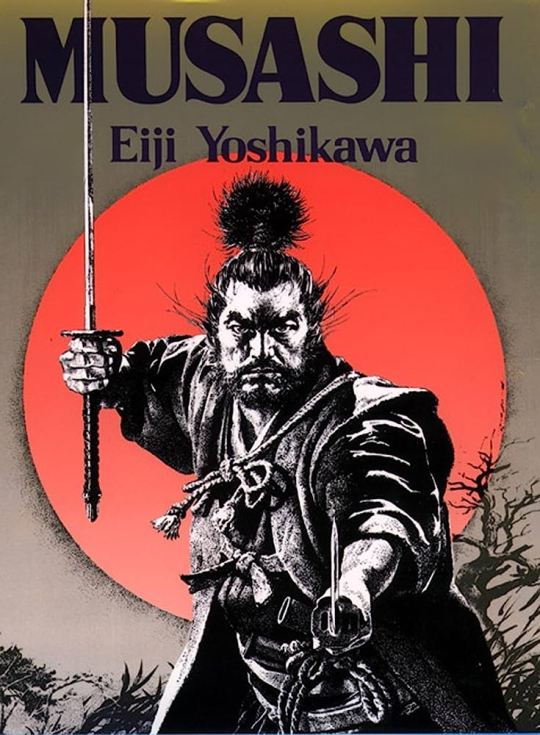
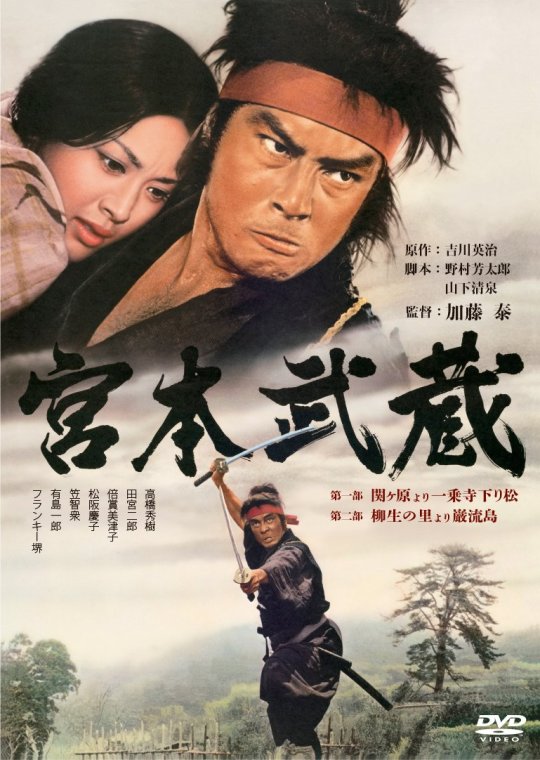
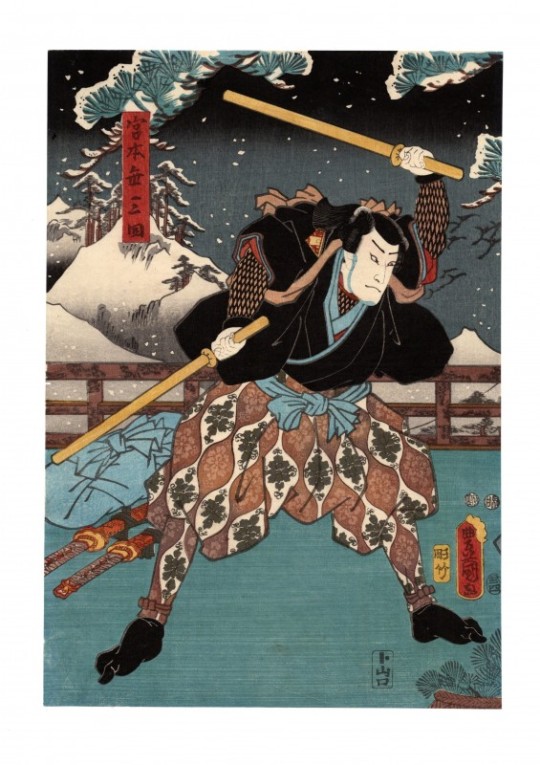
Miyamoto Musashi (宮本 武蔵, c. 1584 – 13 June 1645), also known as Shinmen Takezō, Miyamoto Bennosuke or, by his Buddhist name, Niten Dōraku, was a Japanese swordsman, philosopher, strategist, writer and rōnin, who became renowned through stories of his unique double-bladed swordsmanship and undefeated record in his 61 duels.

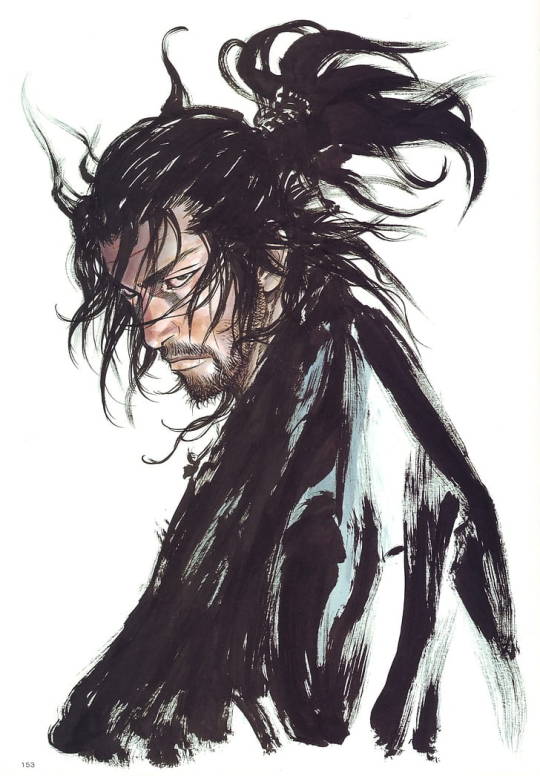

Musashi, as he was often simply known, is considered a Kensei, a sword-saint of Japan. He was the founder of the Niten Ichi-ryū, or Nito Ichi-ryū, style of swordsmanship, and in his final years authored The Book of Five Rings (五輪の書, Go Rin No Sho) and Dokkōdō (獨行道, The Path of Aloneness).
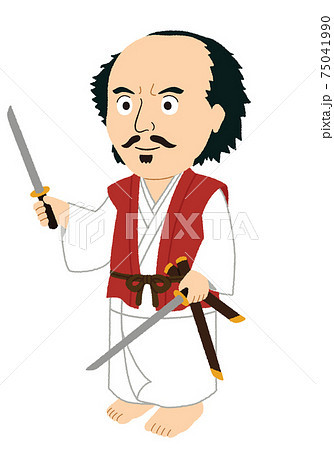
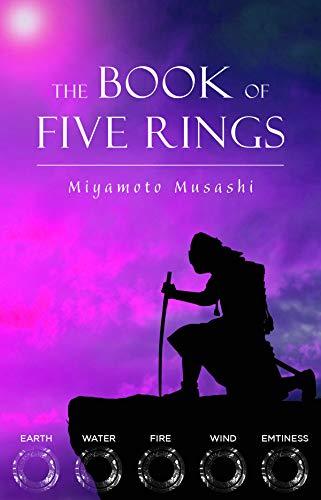

Both documents were given to Terao Magonojō, the most important of Musashi's students, seven days before Musashi's death. The Book of Five Rings deals primarily with the character of his Niten Ichi-ryū school in a concrete sense, i.e., his own practical martial art and its generic significance; The Path of Aloneness, on the other hand, deals with the ideas that lie behind it, as well as his life's philosophy in a few short aphoristic sentences.
0 notes
Text
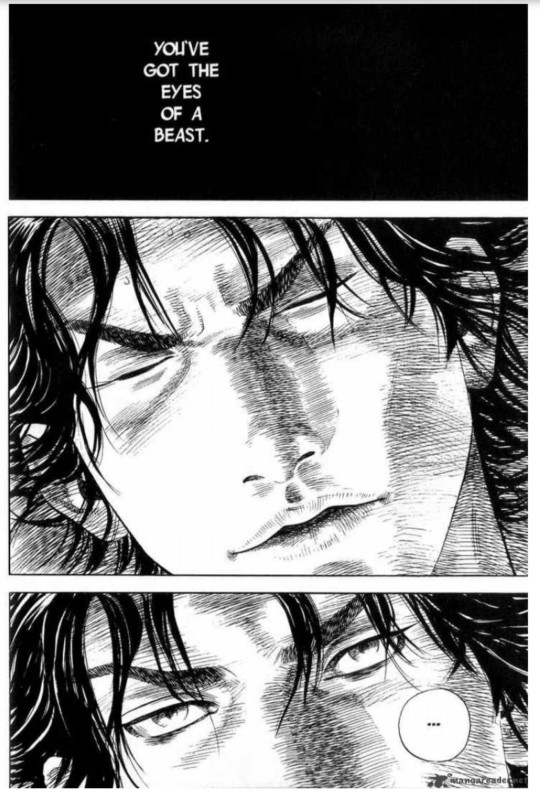
Vagabond, Chapter 3
10 notes
·
View notes
Photo
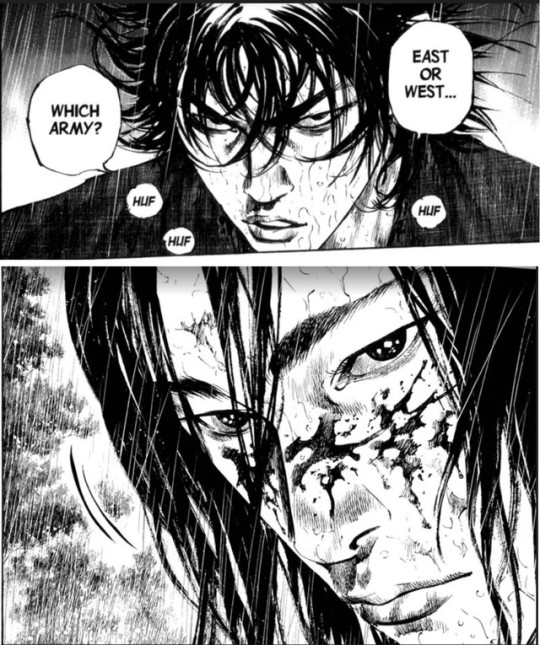
They met on the battlefield of Sekigahara and now I don’t know anymore which one I’m fangirling more: the wild beast of Takezō or that perfect detachment of Kojirō.
5 notes
·
View notes
Text

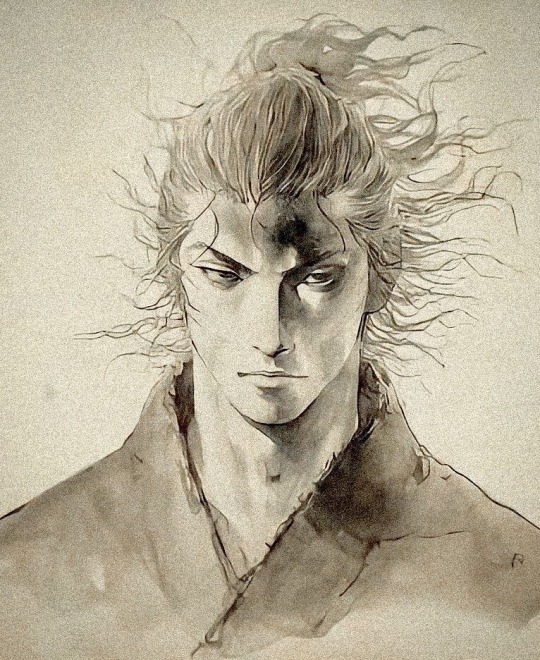
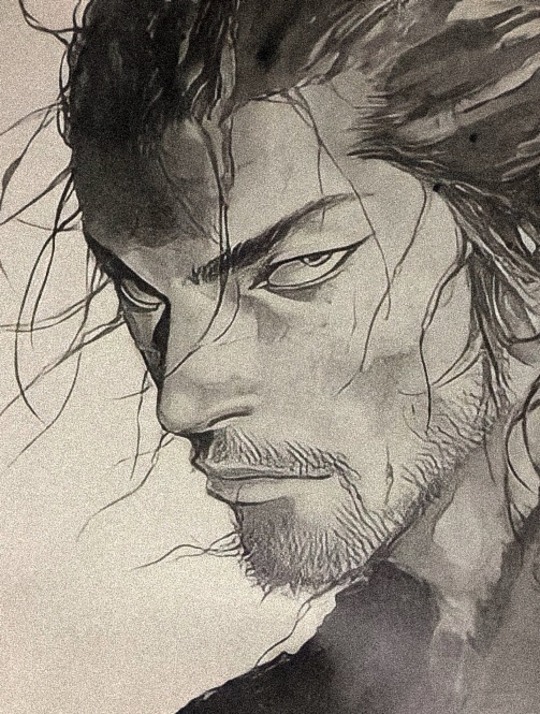

From Shinmen Takezō to Miyamoto Musashi…
420 notes
·
View notes
Text
Effigy
4.
The final climb to the temple complex was done at an almost suicidal incline. Were it not for the chains that had been hammered into the cliff face, it would have been an impossible feat while they were burdened by their weapons and equipment.
“In its heyday, it would have been necessary to abandon your worldly possessions before entering this place,” Kaijin explained to Ruì Yīng as he pulled up each member of the supply train, one by one through a difficult section of trail.
Ruì Yīng looked down at the sheer drop, the ground below disappearing behind the canopy of the Nagxian jungle. “Has anyone fallen?”
Kaijin nodded. “From time to time. Traditionally, the bodies of the fallen would be collected, cleansed, and buried with the blessings of the monks who used to reside here. Their belongings would be treated as donations to the temple. Until recently, the elderly of nearby villages would come here to do just that. So as to not be a burden upon their families and make their final offerings to their Kami.”
“An unnecessary extreme,” Hideshi commented as he too joined to help the others of their party up.
Since their confrontation, he seemed to give Kaijin a modicum of respect despite his open distaste of the Doman boy.
“We walk a pilgrim’s path, Master Sato. I am sure its creators and pilgrims who used it deemed it as necessary as faith itself,” Kaijin retorted as he assisted the stretcher bearers who carried Unconscious Zhāng. The boy regarded the feverish Doman for a moment before continuing, “and faith is a necessary thing, lest we make monsters of ourselves.”
Beyond the final incline sat a temple fortress large enough to be a city. Made from polished volcanic stone, three pagodas stood atop the plateau connected by a massive central courtyard. Around it was a perimeter wall flanked by a cliff face on one side and a sheer drop off the mountain to the other. Though majestic, upon closer inspection, it was clear that these structures were all long past their prime. While one of them seemed pristine given its age, another was overgrown, and the last seemed blackened by an ancient fire. Each of them were missing parts, eaten away by both time and the insatiable jungle.
Waiting at the fortress gates that led into the central courtyard, stood an older Hingan man in a dull coloured hakama. Tucked into the silk sash around his waist were two katanas of similar length, a peculiar sight for the Domans.
As Captain Diệm split off from the party with supplies and Unconscious Zhāng in tow, the trio approached the older man who had come out to welcome them.
Kaijin stepped forth at once to introduce them. “Master-at-Arms Sato Hideshi. Kōhaishi Fù Ruì Yīng.” he announced as a formality, even though they needed no introductions to the very man who had called them here. The boy continued, “my handler, and founder of the Kōhai Project. Sensai Shinmen Takezō.”
“Welcome to Vách đá Thánh. The Blessed Cliffs.” said the older man.
“It is an honour to meet you in the flesh, Kensei.” Hideshi replied, bowing in respect as Ruì Yīng did so as well.
“Kensei?” the alleged sword-saint laughed. “Ah, so my reputation precedes me. Tell me, Master-of-Arms Sato, how is Koshu? It has been a long time since I set foot on the home islands.”
“Endowed with fair winds and following seas, as always.” Hideshi replied.
Shinmen Takezō smiled. “Such things are worth protecting from the Garleans, even if the Shogunate is too short-sighted to see that.”
Hideshi had to bite back his tongue, lest he reprimand his superior for disrespecting the Bakufu. “They only do what they believe is best, and supporting an independent Doma & Nagxia is not desirable.”
“Is it not? Perhaps they do not see the threat Garlemald poses if it consumes the mainland and all its peoples…” the older man said, only to pause when he observed Hideshi’s discomfort. “But no matter, we can discuss matters of national loyalty later, when we speak of your Kōhaishi.” The Sensei then turned to address Ruì Yīng. “You must be the Yanxian girl, from northern Doma. That would make your name 瑞英? Promising Flower?”
Ruì Yīng nodded, bowing her head in respect. The Sensei hadn’t proved that he wasn’t deserving of it, yet. “Lucky Flower,” she corrected.
“Nay, that betrays the potential you hold,” Sensei Shinmen turned towards the courtyard of polished stone intending to lead them towards the rest of the complex. But when he noticed Ruì Yīng trembling with curiosity, the older man stopped mid-step for her benefit. “Before we begin your tour of the place, tell me, do you have any questions?” he asked graciously.
The girl spoke without hesitation. “Kōhaishi Sawashiro mentioned that I may be the strongest candidate to date. You speak of my potential. But I am nothing more than a competent swordswoman.”
“More than competent,” Hideshi corrected, complimenting her teacher. “But there is much more than mere physical ability to consider.”
“Sato-san is right, there is more to you than just the strength of your sword arm or the sharpness of your mind,” Sensei Shinmen said as he tapped his temple, then brought his hand over his heart.
Ruì Yīng caught on to his gesture, unknowingly placing her own hand over her heart as well. “My aether? But I can barely harness it.”
“You don’t have to. If that was what we sought, you wouldn’t have been selected as a candidate and likely have been trained as a Geomancer.” the Hingan Sensei reassured her, then tapped over her heart. “No, you are here because of your strength of spirit--your strength of soul.”
Ruì Yīng chuckled. “My soul is going to kill Garleans?” Her laughter faded immediately when she saw the older man remained dead serious.
“You can feel the weight of it, can’t you? So much so, that it is difficult to carry?” he asked solemnly, giving her a knowing look.
It was as if someone had asked her to think about breathing, for Ruì Yīng had suddenly become aware of an unspeakable weight; pooling in her centre like a mix of tumultuous emotions.
The Sensei continued. “Like steel, it is both heavy and amorphous in its raw form. Here, under our instruction, you will learn to forge it, hammer it, sharpen it--and if you are lucky--one day you will wield it as tangibly as the blade on your back.”
--
“I am unsure how much Kōhaishi Sawashiro has told you about the Blessed Cliffs,” Sensei Shinmen said as they crossed the courtyard. “But if you would indulge an old man’s passion, I will tell you all about it.” He smiled back at his guests, pretending that they weren’t a captive audience.
“If it is to be our home for the foreseeable future, context would be valuable.” Hideshi replied on behalf of his juniors.
“The scholars of Koshu & Doma have always turned a blind eye to the region. Passing Nagxia off as an unremarkable place of jungles and swamps which has ‘failed to produce a historically significant nation’.” Sensei Shinmen said, as if quoting from a text. “They fail to recognize the rich history that lay outside of their isolationist-centric thinking. Either showing that they do not know, or do not care about the peoples of Nagxia...”
Hideshi nodded. “If these lands were indeed so insignificant, the Garlemald Empire would have ignored it. Nor would it have taken three years to conqueror while Great Dalmasca took one,” he said, buttering up his senior.
“Precisely,” the Sensei said with a grin. “Because Nagxia is not one nation, but several. If they had all united in their cause, I am sure it would have taken them three decades rather than years.”
The group stopped in the middle of the courtyard of polished stone. Ruì Yīng noticed for the first time that the temple complex seemed to be designed in the shape of a flower of carved stone petals and here she stood in the centre of it.
Sensai Shinmen faced them all eastwards. “In ancient times, the Blessed Cliffs were once the seat of power of Nagxia. Like a Lotus facing towards the rising sun, the fortress gate to this once holy place lies to the east. Beyond those are The Summer Highlands and River’s End provinces. Beyond even that, if look carefully enough, you might even make out the Emerald Bay.”
The older man faced the group north, towards a temple guarded by armed members of the Nagxian Liberation Front. “The Northern Pagoda belongs to the resistance sect led by Captain Diệm, whom you already are acquainted with. In exchange for our support in important operations, diplomatic connections, and funding, they provide us food, shelter, and anything else we might require for the project.”
He turned their attention to the structure to the west, blackened by an ancient fire. “The Western Pagoda acts as our warehouse. In the very centre of its walls sits a vault that once housed holy relics, now it houses our supplies and the infirmary. It is likely where Diplomat Zhāng will remain until he defeats his fever, or his fever defeats him.”
Finally, he presented the section of the temple fortress that seemed to be overgrown, so much so that it was like it had been absorbed into the cliff-face behind it. Trees had grown wherever they found purchase, and their roots were beginning to force the ancient stone bricks apart.
“The Southern Pagoda belongs to us,” Sensei Shinmen said, turning to Ruì Yīng as if addressing her specifically. “Here, within these walls we have gathered all the world’s strength:
Local Nagxian warriors from the Sầm Princedoms, Lam Dynasty, Sakya Family, and the Udayan People.
Foreign freedom-loving peoples like yourself from Doma, Indoaya, the Emerald archipelago, and true patriots from Koshu like myself and Master Sato.
All have been gathered here to bring an end to Garelean Expansion through the Kōhai Project.” The Sensai concluded.
Sensing that it was finally her time to speak, Ruì Yīng asked the question that had been burning within her since she had been given to the Doman Liberation Front for this very purpose. “What is the Kōhai Project?”
Her Sensei smiled, almost as if he had planned for her response. “Tell me, what do you know about Yōtō?” he asked.
“Yōtō? Devil Swords?” Ruì Yīng questioned, recalling stories that were told to her brothers when she was younger. Stories of swords that hungered for blood, refusing to be sheathed until they had been sated. She spoke up, “legendary swords, made by a mad swordsmith who had poured all of his violent will into their creation.”
“While Doma may have long lost the artform to forge these blades, I assure you that in Koshu, these swords are not merely Legends,” the Sensei explained. “But we are not creating Yōtō here, instead, Jun-tō. Pure Blades. You see, the secret to smithing is in the intent of their creation. Violence is not the only thing that can be willed into a sword but selflessness, resolve, and the will to resist. The greatest Hingan & Inodayan smiths have gathered here to do just that.”
Ruì Yīng, awe-struck by the revelation, took a long moment to piece together all she had learned so far. “So…the Kōhai Project was made to create these swords?” she asked.
Sensei Shinmen laughed, revelling from the look of wonder in Ruì Yīng’s eyes. “Yes, but more than that, the Kōhai Project was made to teach candidates like yourself how to wield them.”
–
Part 3
Part 5
22 notes
·
View notes
Text
Miyamoto Musashi, el guerrero temerario de Japón
Miyamoto Musashi, el guerrero temerario de Japón
Miyamoto Musashi (宮本 武 蔵, 1584 – 13 de junio de 1645), también conocido como Shinmen Takezō, Miyamoto Bennosuke o, por su nombre budista, Niten Dōraku, fue un espadachín, filósofo, estratega, escritor y rōnin japonés. Musashi, como se le conocía simplemente, se hizo famoso a través de las historias de su habilidad única con la espada de doble filo y su récord invicto en sus 61 duelos (el…

View On WordPress
6 notes
·
View notes
Text
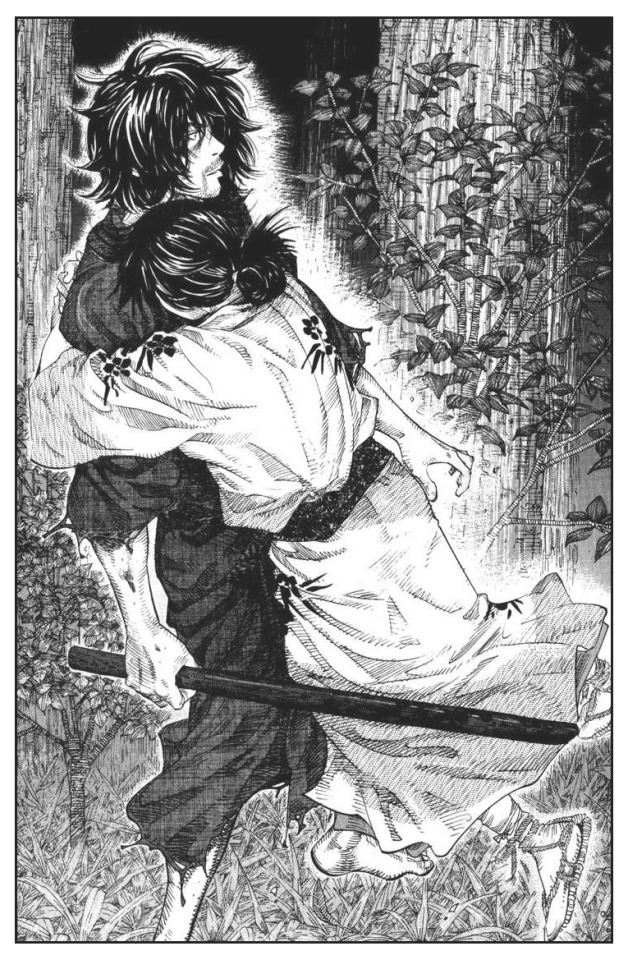
87 notes
·
View notes
Text





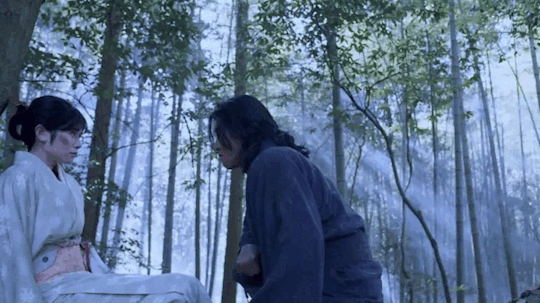
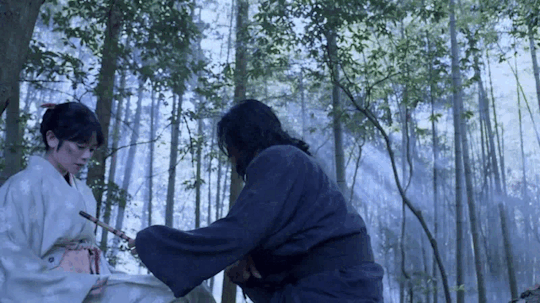
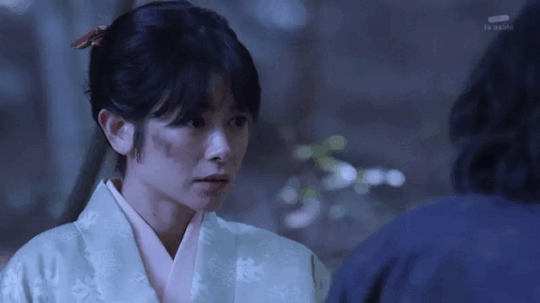

Miyamoto Musashi : Episode 1 (part 5)
Kimura Takuya as Shinmen Takezō / Miyamoto Musashi
Maki Yokō as Otsū
#kimura takuya#takuya kimura#maki yōko#jdrama#miyamoto musashi#jdramaedit#long post#…did i mention that kimura is feral in this one?#last one for this drama for now…might make more in the future#getting too close to everything being spoilery#also this was only a two ep special#…man i didnt even get to gif sawamura…he looked SO good in this…#drama gifs#tsukutta
9 notes
·
View notes
Note
the icons post, isn’t the last one Musashi in Vagabond? I think it’s not Hanzo Hasashi.

Random Inbox Shenanigan || anonymous || always accepting!
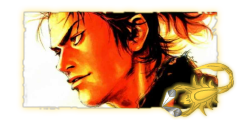

As @sonxflight introduced me to Vagabond and I fell in love with the movie 47 Ronin, I use Miyamoto Musashi (aka Shinmen Takezō) from Vagabond as Hanzo Hasashi’s half-demon verse FC, as I draw many parallel from the comics to Hanzo/Scorpion’s character.
#breathing iron and rust (outofkombat)#✗ an innocuous unknown (anonymous messages)#(as a secondary FC)#(although I much more prefer MK11/Scorpion's Revenge along with Hiroyuki Sanada)#anonymous
4 notes
·
View notes
Photo
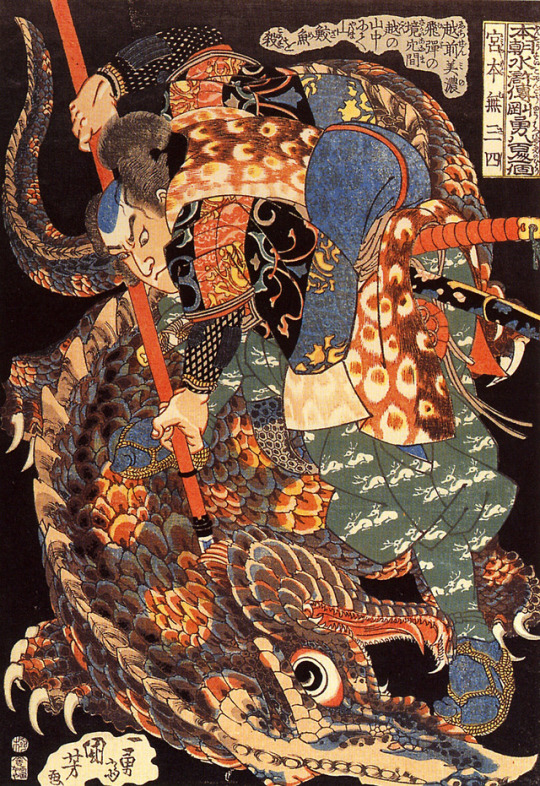
“Musashi Miyamoto tuant un nue ” de
Utagawa Kuniyoshi 歌川国芳 (1797 - 1861).
Note : Un nue 鵺 est une créature fantastique de la mythologie japonaise. C’est un animal mythologique dont le corps se compose de plusieurs parties issues d'animaux différents. En ce qui concerne le nue, il est composé d'une tête de singe, d'un corps de Tanuki, de pattes de tigre et d'une queue de serpent. Il peut se transformer et se déplacer sous la forme d'un nuage noir.
Miyamoto Musashi 宮本 武蔵 (1584-1645), de son premier nom Shinmen Musashi Fujiwara 新免武蔵藤原, aussi appelé Miyamoto Takezō, ou par son nom bouddhiste Niten Dōraku, est l'une des figures emblématiques du Japon et le plus fameux escrimeur de l'histoire du pays.
#utagawa kuniyoshi#painter#painting#print#demon#japan#peintre#peinture#estampe#démon#japon#nue#yokai#miyamoto musashi#ukiyoe
125 notes
·
View notes
Photo

"There is nothing outside of yourself that can ever enable you to get better, stronger, richer, quicker, or smarter. Everything is within. Everything exists. Seek nothing outside of yourself." -Miyamoto Musashi (12 March 1584– 13 June 1645) was a Japan swordsman, philosopher, strategist, writer and rōnin. He is also known as Shinmen Takezō, Miyamoto Bennosuke or, by his Buddhist name, Niten Dōraku. Thanks to Ralph (Ravi) Kayden for sharing their work on Unsplash Don't forget to follow @aceth3day to not miss any inspiring material. #aceth3day #acetheday❤️ #purposedrivenlife #selfdevelopment #inspiration #inspirationalquotes #success #successmindset #successquote #successtips #successstory #successfull #successfullovequotes #successdriven #SuccessTip #motivationalquotes #motivation #quotesoftheday #quotes #savagequote #mindfulness #coaching #coach #purposecoach #lifecoach #lifecoaching #japan #miyamotomusashi https://www.instagram.com/p/CGPCCeNDg_O/?igshid=1gyv9dcctr77c
#aceth3day#acetheday❤️#purposedrivenlife#selfdevelopment#inspiration#inspirationalquotes#success#successmindset#successquote#successtips#successstory#successfull#successfullovequotes#successdriven#successtip#motivationalquotes#motivation#quotesoftheday#quotes#savagequote#mindfulness#coaching#coach#purposecoach#lifecoach#lifecoaching#japan#miyamotomusashi
0 notes